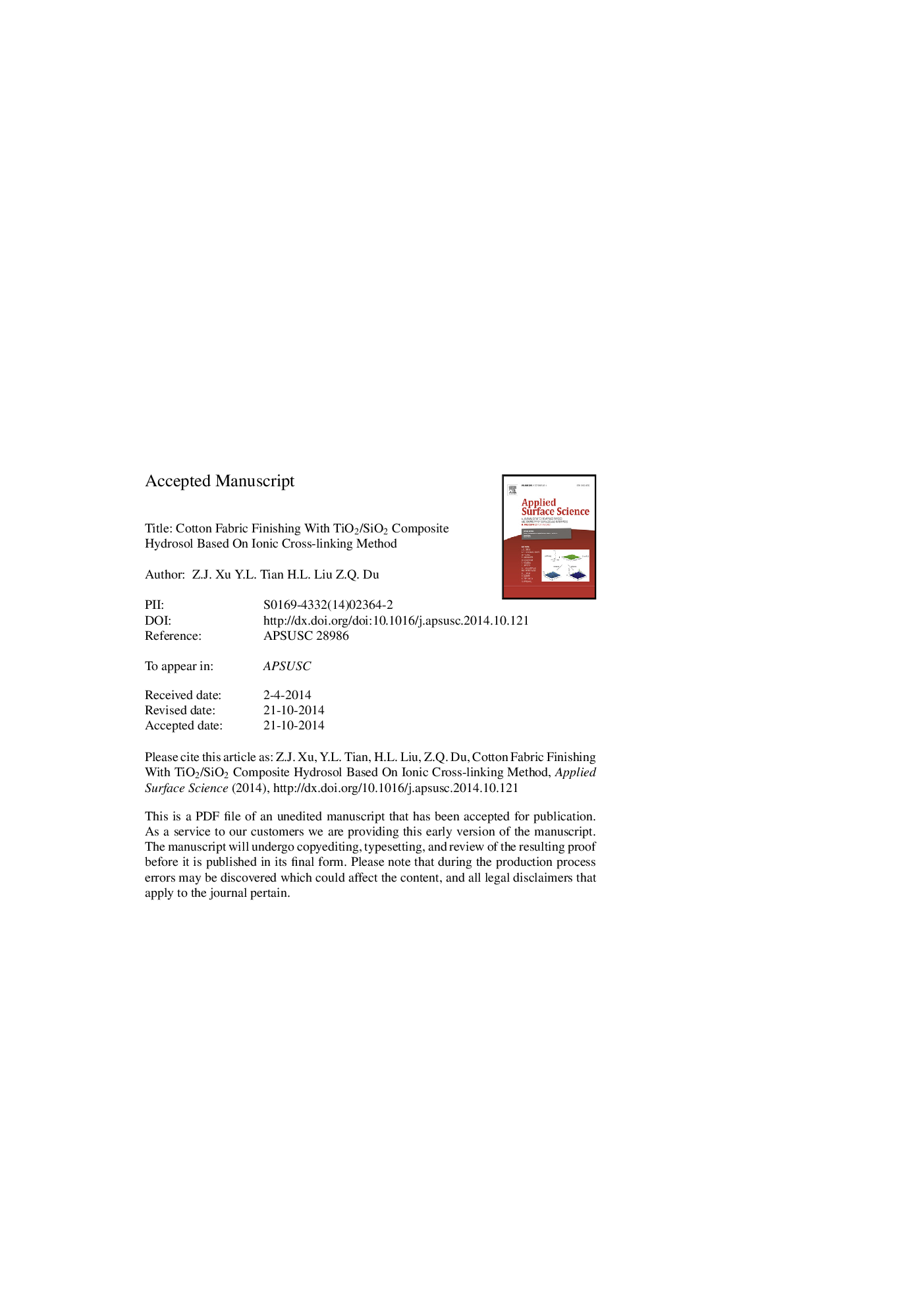| Article ID | Journal | Published Year | Pages | File Type |
|---|---|---|---|---|
| 5349001 | Applied Surface Science | 2015 | 19 Pages |
Abstract
Cotton fabric was successfully modified by 3-chloro-2-hydroxypropyl trimethyl ammonium chloride (CHTAC), 1,2,3,4-butanetetracarboxylic acid (BTCA) and TiO2/SiO2 sol. Self-cleaning characteristic was investigated using a Color Measuring & Matching System with 6Â h sunlight irradiation. And the stability of TiO2/SiO2 coatings was explored by measuring the washing fastness and wrinkle resistance of treated cotton samples. In addition, whiteness index, crease recovery angle and tensile strength retention (%) of treated samples were evaluated. Moreover, the morphology, structure change and crystallinity of samples were observed by scanning electron microscopy (SEM), Fourier transform infrared spectroscopy (FTIR) and X-ray diffraction (XRD), respectively. The results revealed that the samples treated with CHTAC had lower value of whiteness index as compared with original cotton fabric. It was also found that samples treated with BTCA achieved higher crease recovery angle and lower tensile strength. Moreover, the treatment of CHTAC and BTCA had adverse effect on the crystallinity of cotton samples, as treated samples had lower crystallinity in comparison with raw cotton fabrics. Nevertheless, the stability of self-cleaning coatings was better for samples treated with ionic cross-linking treatment (CHTACÂ +Â BTCAÂ +Â TiO2/SiO2) than samples treated with TiO2/SiO2 sol alone. Furthermore, compared with original samples the UV-blocking property of ionic cross-linking treated samples was obviously enhanced.
Related Topics
Physical Sciences and Engineering
Chemistry
Physical and Theoretical Chemistry
Authors
Z.J. Xu, Y.L. Tian, H.L. Liu, Z.Q. Du,
